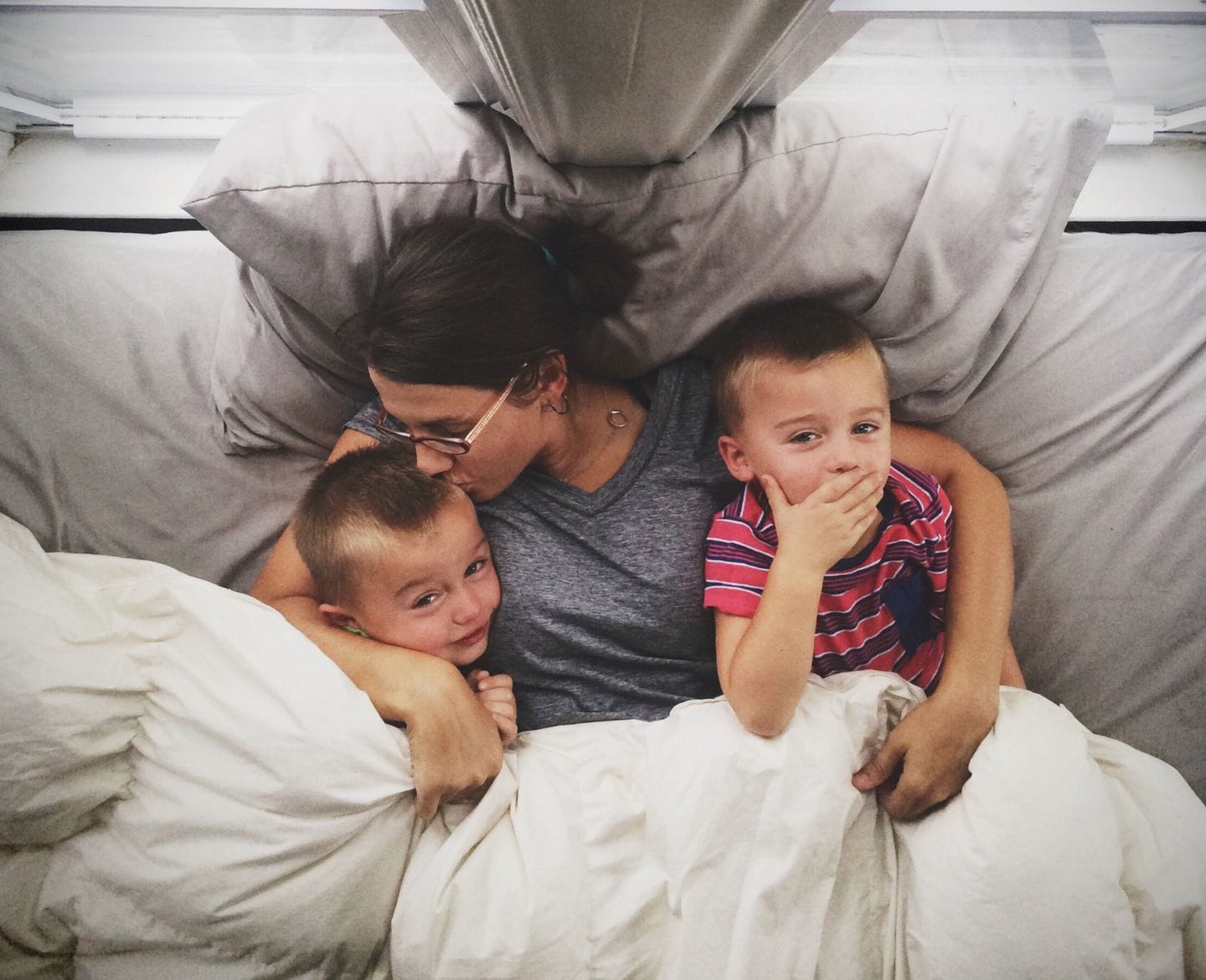3 lessons I’ve learned raising 3 sets of twins

@heather_lee_wilson/Twenty20
A mom of seven shares how she manages stress and stays present for each of her children.
Table of Contents
For almost a year, I’ve had the pleasure of seeing people’s surprised expressions when I share that I’m a mom to seven kids, including three sets of twins. I’m enjoying these moments because it took me and my husband 17 tumultuous years of navigating infertility via international adoption, IVF, pregnancy loss and surrogacy to create our family.
After we welcomed our second set of twins home via surrogacy, I could feel myself succumbing to the swirl of chaos around me. To manage my stress, I took a deep dive into meditation and mindfulness and became certified to teach. I have helped thousands of parents and aspiring parents navigate the challenges of infertility, pregnancy and parenthood through my classes, sessions and books, “Mindfulness Journal for Parents” and “5 Minute Mindfulness for Pregnancy.”
Related: 10 essential ways new moms can support their mental health
Throughout my time as a mom of multiples, I have applied my mindfulness expertise to solve many issues that come with raising many children.
Below are three of my all-time favorite lessons learned.
Lesson 1: Pivoting your mindset
With three sets of twins in different age groups—babies, 6-year-olds and 13-year-olds—I have to constantly pivot my mindset and approach when interacting with my children so that I can be fully present for them.
A teenager’s needs are vastly different from a baby’s needs, so no matter whom I’m focusing on at that moment, I try to utilize my 4P’s mindfulness strategy: Pause, Process, Pivot, Presence.
That looks like:
- Pause. Take a deep breath to move from a state of overwhelm, stress or just busyness and into a calmer frame of mind.
- Process. From this calmer and clearer state of mind, you can now process your situation and evaluate what needs to be done.
- Pivot. Now that you are calm and have clarity on your next steps, pivot your mindset to your new situation. You can do so by repeating a gentle reminder in your head, “It’s now time to move from Child A’s needs to Child B’s” or “It’s time to move from what I was doing before to my child’s needs.”
- Presence. Once you are in the moment with your child, do your best to stay present so your child can feel seen, heard and supported. Again, a mindfulness strategy like repeating a mantra can give you a little nudge to stay on track. Try saying: “I am being present for my child.”
Whether you have one set of multiples or a few kids of different ages, you can apply my 4P’s mindfulness principle to how you approach your various children in a way that honors their unique needs.
Lesson 2: Quality over quantity
As a busy mom of many sets of multiples, the adage of quality over quantity rings true for me every day. No matter how many kids you have, it can always feel like they need something, whether they ask for it or not.
Being an attentive parent is a precarious balancing act when you are also committed to caring for your own well-being.
Related: How mindfulness saved my motherhood from anxiety, PPD and OCD
I’ve learned time and again that little moments of true presence with my child are more beneficial for both parties than a few hours of distracted time that may involve multitasking.
If it is challenging to find focused time with your child while juggling meal prep, answering emails, tidying the house or any of the other amazing things you do as a parent, try scheduling a block of 10-15 minutes of unadulterated quality time with your child into your calendar along with blocking off time for other tasks. Knowing that you have set aside time in the rest of your day for other obligations takes the pressure and stress off of time that you dedicate only to your child.
Lesson 3: Organization is key
Long ago, I used to have my own event planning company. Organization is inherent to my nature and has helped me manage a household of children with various activities, interests and appointments.
I use an online calendar that is visible to everyone in the family to help us all stay accountable and on track.
If organization proves to be challenging, try changing your perspective or approach to planning. Perhaps creating a visual wall calendar with embellishments like stickers will make it more fun. If you’re keen on technology, try using voice memos or other smart devices to record things that need to be scheduled for your family.
As I’ve demonstrated, one approach to parenting multiple children is to blend mindfulness with organization. You can set yourself up for success by organizing and planning as much of your family’s schedule as possible, which then allows you to have those precious moments of presence that you and your kids will cherish for a lifetime.
Along the way, if you start to feel overwhelmed or stressed with the demands of parenting—whether you have one kid or more, remember the 4P’s: Pause, Process, Pivot and Presence.
That way, you’ll have the power of planning and presence on your side, mama.
Introduction to conscious parenting for real moms
About the author
Josephine Atluri is an expert in meditation and mindfulness, helping thousands of people overcome adversity to find joy. A graduate of the University of Chicago, Josephine then became certified as a meditation teacher. Her experience creating her family of seven children via In Vitro fertilization, international adoption and surrogacy inspires her work as a highly sought-after fertility and parenting mindfulness coach.
Josephine hosts the podcast, “Responding to Life: Talking Health, Fertility, & Parenthood,” where she interviews guests on their inspiring responses to life’s challenges. Josephine is the author of the books, “Mindfulness Journal for Parents” and, “5 Minute Mindfulness for Pregnancy”






































